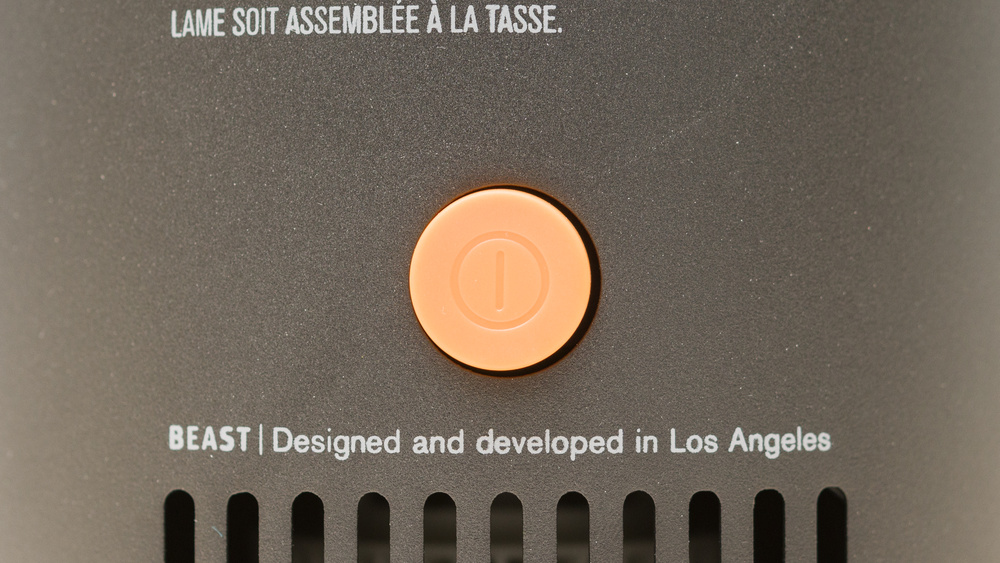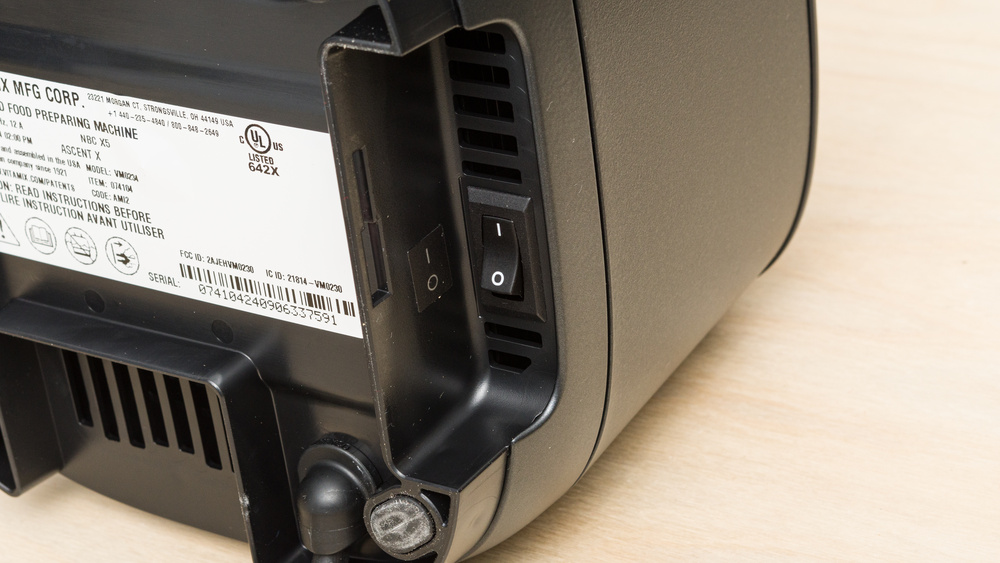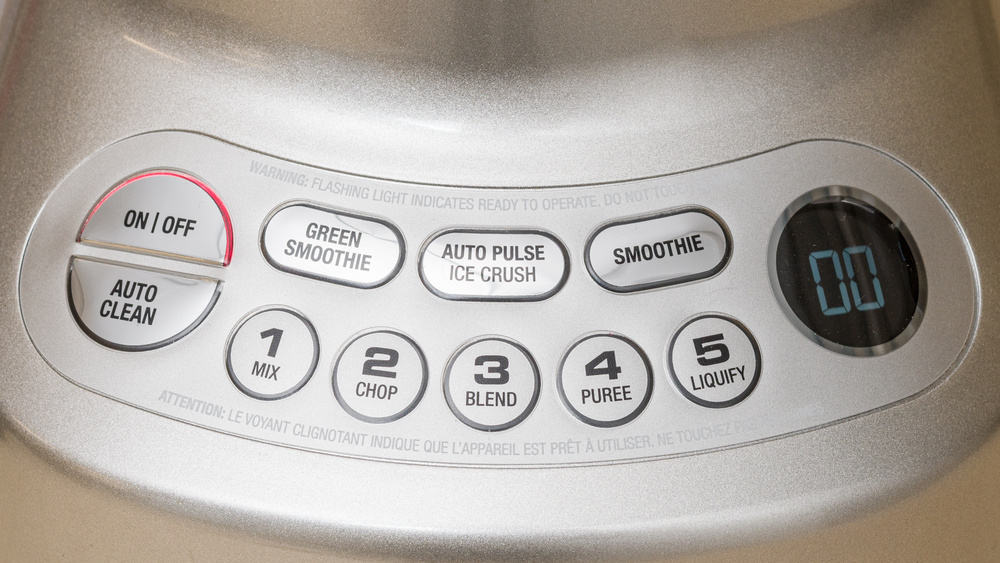A blender's controls and programs affect how easy a model is to use and how suitable it is for different purposes. In these tests, we check for various features, like blending programs, a pulse mode, and an on/off switch. We also record the number of speed presets and blending programs.
When It Matters
A blender's controls and programs affect its ease of use and suitability for different purposes. These results are particularly important if you want a versatile full-size blender; you'll want to look for features like hot blending and a speed dial if you want to use your blender for a variety of recipes.
Other results don't necessarily affect a blender's performance but can affect how easy or pleasant a particular blender is to use. If you prefer to blend manually, you probably want a blender with a speed dial or many speed presets, so you have many options for adjusting its speed. For the convenience of automatic blending programs, you'll want to look for one with lots of different programs for different purposes.
Our Tests
The tests for controls and programs include checking whether a blender includes certain features and recording the results. These results can help you determine if a specific blender is well-suited for certain purposes or if it has the design features you prefer.
On/Off Switch
For this test, we record if the blender has an on/off button or switch that needs to be activated before the machine will start, separate from a 'start' button. This is a safety feature that full-size blenders are most likely to have, while personal blenders usually lack it altogether. However, some blenders have other design features that stop you from turning them on accidentally. The nutribullet Pro doesn't turn on until the jar twists into place, and the battery-powered BlendJet 2 has a locking mechanism. However, these features aren't counted as on/off toggles.


Speed Presets
This test records the number of speed presets a blender has for manual blending. Full-size blenders with a wide range of speed presets are more versatile since you can adapt their performance for different recipes. Most personal blenders have only a single speed setting, which is suitable for recipes like smoothies or protein shakes.


Speed Dial
The results of this test tell you whether the blending speed is controlled with a dial. Some blenders with speed dials have a set number of speed presets, while others have no set presets, allowing you to make small adjustments with the dial. Blenders with a speed dial and '0' speed presets are the most adjustable, although it's also important that a blender has a wide range of speeds for maximum versatility.
There doesn't necessarily need to be a literal dial for the result to be 'Yes' under 'Speed Dial.' For example, the KitchenAid Variable Speed Corded Hand Blender blends faster the harder you push on the trigger button, which counts as a speed dial because it allows you to adjust the speed incrementally.


Hot Blending
This test tells you whether you can use a blender to blend hot ingredients. To be safe for hot blending, a full-size blender must have a vented lid so you can blend with the lid on and have steam escape. Immersion blenders are intended for hot blending. Virtually no personal or portable blenders can hot blend since the design doesn't allow for steam vents.
Pulse/Turbo Mode
This test determines if the blender has a pulse or turbo mode that allows you to run it in short bursts. Some blenders have a dedicated pulse mode, but we also check if it's possible to simulate a pulse mode by quickly turning the blender on and off. We record the result as a Yes or No since we don't test how the blender performs with pulse mode.
This feature helps break down big chunks of ingredients, like ice cubes, and bigger frozen fruits, like whole strawberries. The Ninja Blender Duo with Auto-iQ BL642 makes fantastic almond butter if you start with pulse mode before blending normally. You can also use pulse mode to avoid over-blending foods like hummus or salsa.
Programs
This test records the number of blending programs a blender has. Blending programs are automatic blending cycles that stop after a set amount of time. Immersion and personal blenders usually have only one or no programs, with some exceptions. Full-size blenders are more likely to have a variety of programs for different purposes, like 'Smoothie' or 'Ice Crush.'
Blenders with a dedicated 'Ice Crush' program can score higher for ice crushing since such a program can eliminate the need to press the pulse button manually.
If you want the convenience of a blender that stops automatically when your food is done blending, you may want to look for a blender with a variety of different blending programs.


Blending Time Indicator
This test tells you whether a blender has a countdown timer or stopwatch that shows how long you've been blending or how long you have left in a blending program. This feature makes it more convenient to use a blender's automatic programs since you can easily check how much time remains in a cycle at a glance.


Programmable Timer
For this test, we check whether a blender has a programmable timer. Not many blenders have this feature, which lets you set a timer and have the blender run for that amount of time before stopping automatically. This can act like a custom blending program, so once you learn how long it takes to blend your favorite smoothie, you can use the programmable timer to get good results every time without watching or monitoring the blending time yourself.

Conclusion
A blender's controls and programs don't necessarily affect its performance, but they can make using your blender more convenient or more suitable for certain recipes. If you make a variety of recipes in your blender, features like a speed dial and a pulse mode are important for maximum versatility. Of course, check if a blender can hot blend if you want to make soups and sauces, and if you want a more automatic blending experience, go for one with a few blending programs.